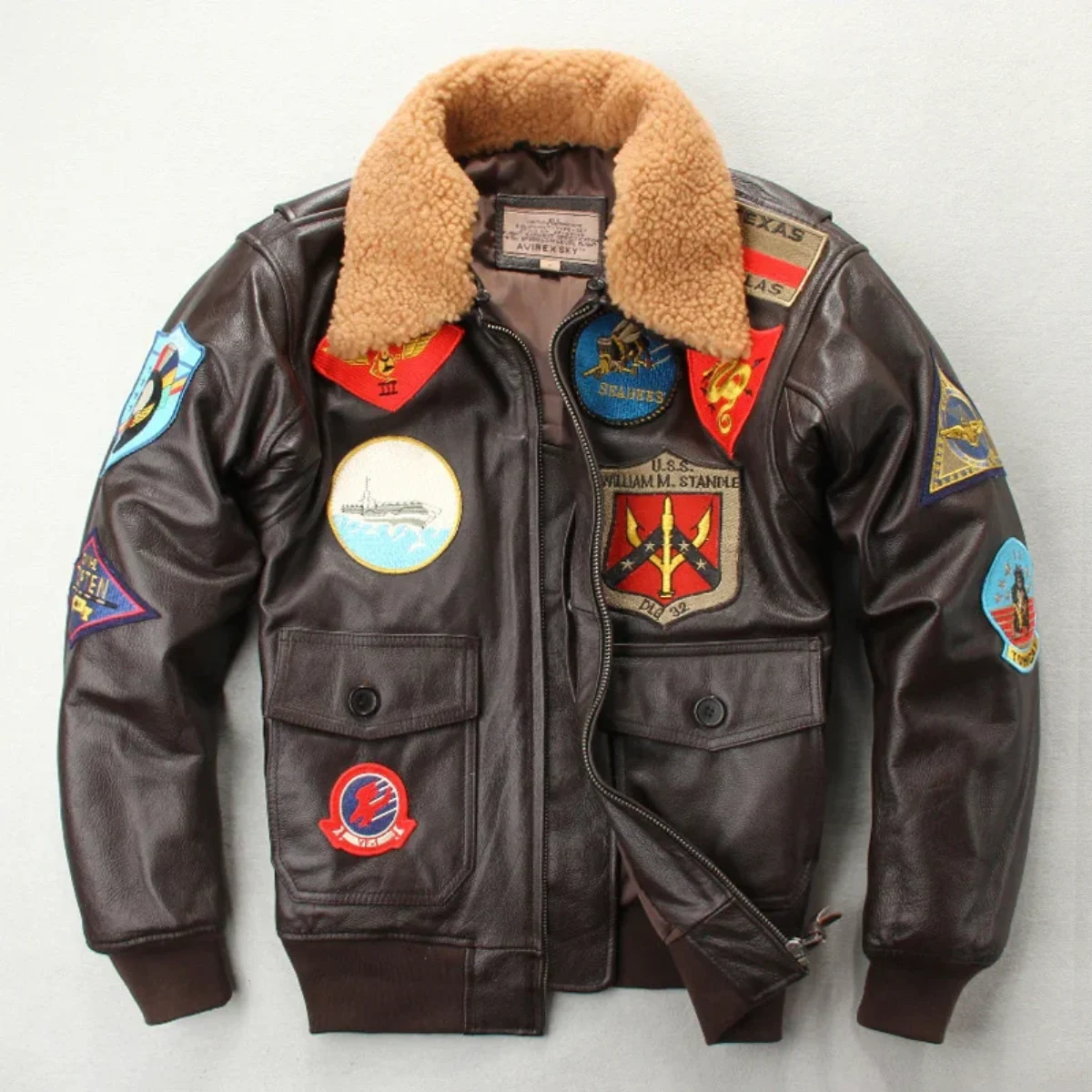
After the movie Top Gun was released in 1986, items such as flight jackets and aviator sunglasses became extremely popular. In the year 2022, the release of Top Gun: Maverick has had a comparable impact on the fashion industry. A jacket is an essential piece to have if you want to pull off the Maverick look, so be sure to put it on your list of things to get Top Gun jacket patches for yourself. However, which one? Let’s have a look at the ones worn by everyone’s favorite fighter pilot.
The G-1 leather jacket, which Tom Cruise wears, is a symbol of naval aviators and is the most recognizable piece of clothing he has in the movies. However, the United States Marine Corps and the United States Coast Guard also award it to officers and enlisted members of their aviation units who are in flying status. The G-1 is distinguished from its Army and Air Force equivalent, the A-2 leather flying jacket, due to its fur-lined collar that comes standard on the G-1. The M-422 jacket, which was first worn by the Navy in the 1930s and became the industry standard in 1940, is where the G-1 jacket gets its start. In reaction to shortages of wartime materials, it was discontinued in 1942 and replaced with the more cost-effective M-422A. On the other hand, the G-1 that we recognize today can be seen in both of these Top Gun jacket patches version .
The majority of naval sailors who served in the United States Navy during World War II wore their leather jackets with only one patch on the left side that carried. The patch contained their name, qualification, and service. On occasion, a single patch representing the squadron was also put on the right side. However, the practice of customizing clothing with patches did not reach the level at which it is practiced now.
In 1947, the Navy released specification 55-J-14, which was the first product to have the “G-1” designation on its label. The primary improvement made to the M-422 over its predecessor was a shorter body that stopped the jacket from bunching up when members of the aircrew sat. During the time of the Korean War, this variant was frequently worn. Since that time, the G-1 has undergone a few additional revisions, but otherwise it has stayed substantially unchanged and is being used today.
In 1971, a cost-cutting effort resulted in the cessation of the distribution of G-1 jackets. All newly hired aviation staff was given a Nomex flight jacket in green color. There was also a halt placed on the replacement of older G-1s. The decision was overturned by the Secretary of the Navy in the beginning of 1981, and those members of the air crew who had not been given a G-1 jacket were given one retrospectively. To our great relief, the original patch was retained in the finished product, and we can see it in Top Gun jacket patches.
Patches are a common way for G-1 jackets to be personalized, as Maverick demonstrates in the movie Top Gun. It is common practice to use them to denote deployments, aircraft flown, and other major milestones. Notably, Maverick’s jacket has a patch on it that commemorates the real-life Far East Cruise 63-4 of the USS Galveston, and it features the flags of the United States of America, the United Nations, Japan, and Taiwan. When the first trailers for Top Gun: Maverick were released, the patch read “Indian Ocean Cruise 85-86,” and “USS Galveston” was substituted with “United States Navy.” Additionally, the Japanese flag was changed to a red and white F-14 symbol; the Taiwanese flag was changed to VF-1 squadron patch. Both of these changes in Top Gun jacket patches were made in order to make the flags more accurate representations of their respective countries. According to reports, the alterations were brought about as a result of Chinese censorship. However, the version of the film that was shown in theaters displayed Maverick’s G-1 jacket complete with all of the garment’s original insignia.
After the first act of Top Gun: Maverick, Captain Mitchell trades in his G-1 for what seems to be a CWU-36/P. This exchange take place near the end of the movie. In spite of the fact that the tag and the lining are never shown on screen, it is reasonable to believe that Maverick wore the lighter summer weight jacket when he was in San Diego.
After all, the CWU-45/P is designed to operate in temperatures as low as 20 degrees Fahrenheit. Maverick proudly displays an American flag, a name patch that includes both his call sign and wings, a patch for the Navy Fighter Weapons School, and a patch for VX-31 on his Combat Work Uniform (CWU).
Numerous modern copies of the G-1 and CWU-36/P may be found on the market today. These Top Gun jacket patches are popular among fans who seek to recreate Maverick’s look . Commercial versions are also available and they are offered by jacket manufacturers that fulfill federal contracts.
